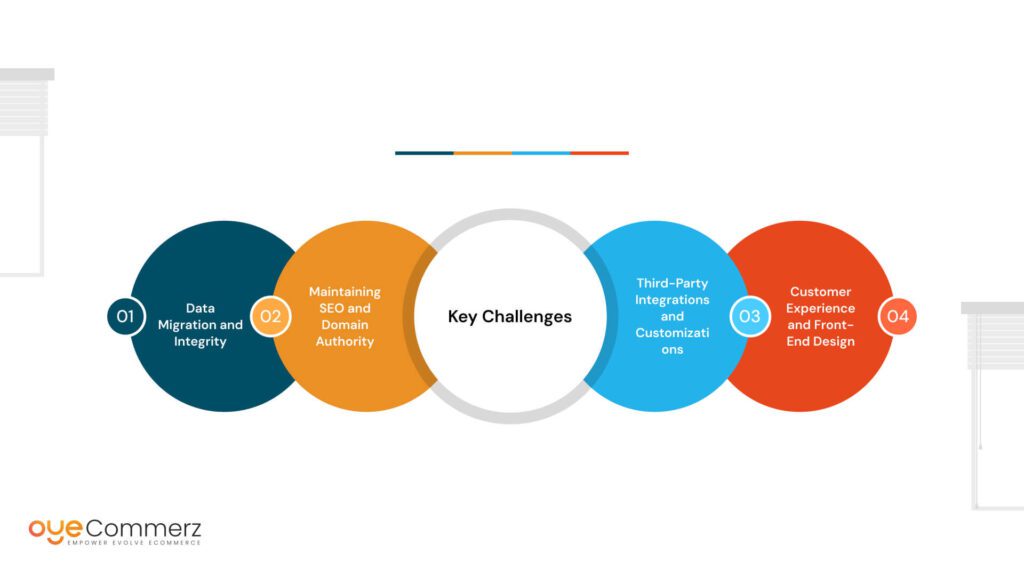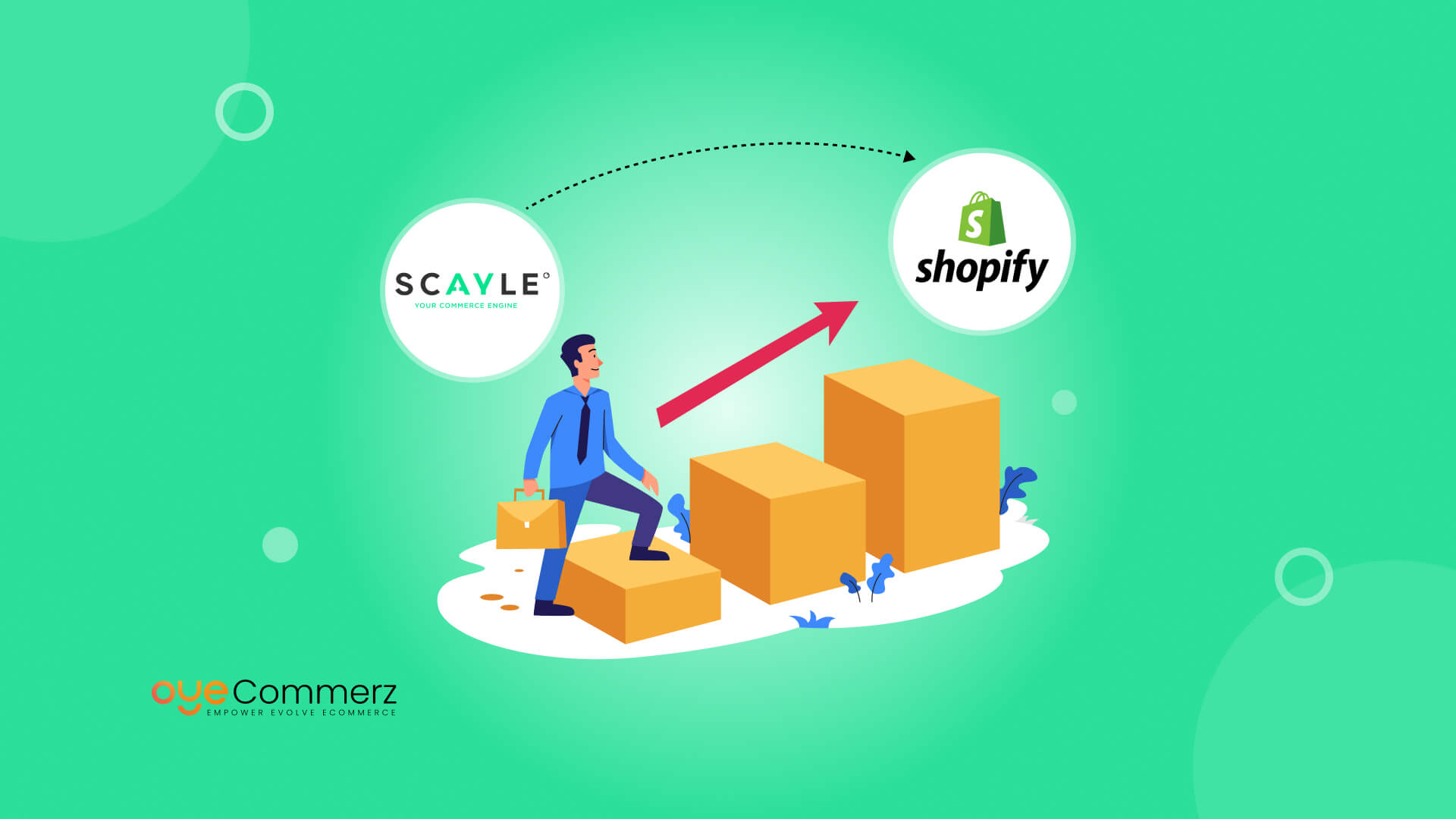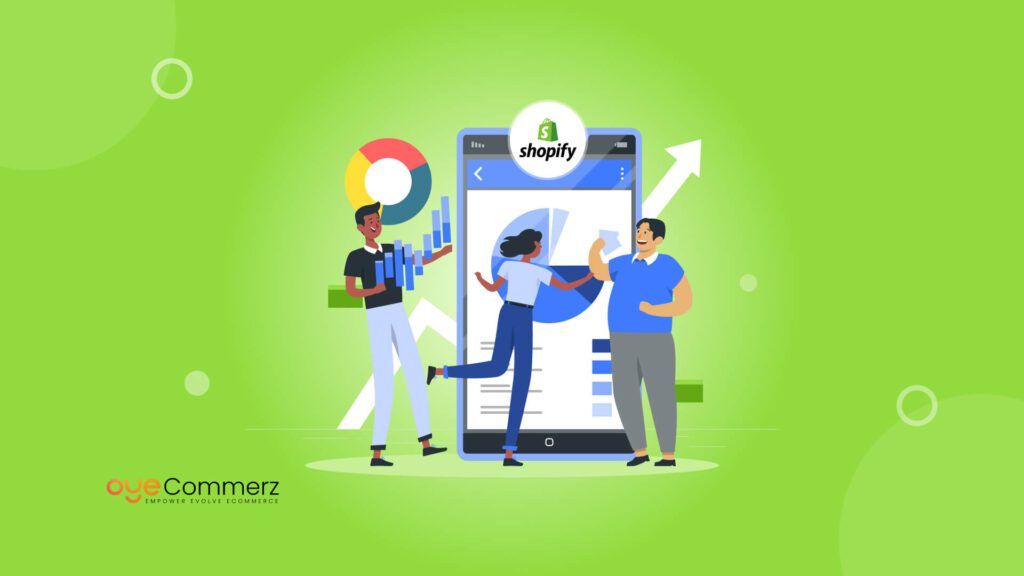Migrating from SCAYLE to Shopify can unlock significant growth potential for enterprise-level e-commerce businesses, but it’s not without its challenges. SCAYLE, known for its scalability and multi-brand capabilities, is a popular choice for many growing companies. However, Shopify Plus has established itself as a market leader in terms of customization, flexibility, and integrations, making it an attractive alternative for businesses looking to optimize their operations. The process of moving from one platform to another can be daunting, especially for large-scale operations.
Understanding the common challenges in migrating from SCAYLE to Shopify can help businesses plan better and avoid costly mistakes. This article will not only highlight common challenges in migrating from SCAYLE to Shopify but also provide actionable strategies to ensure a smooth and successful transition.
Table of Contents
ToggleWhy Migrate from SCAYLE to Shopify?
The decision to migrate from SCAYLE to Shopify is usually driven by the need for a more versatile, scalable, and cost-effective platform that can support a business’s long-term goals. While SCAYLE offers several advantages, Shopify’s user-friendly interface, extensive app ecosystem, and global support network make it the go-to choice for many e-commerce businesses aiming for international growth.
According to recent data from Shopify, more than 4.12 million merchants across the globe use the platform, with Shopify Plus, the enterprise solution, becoming the platform of choice for many larger businesses, switching platforms is a complex process that comes with a set of common challenges, including data migration, SEO retention, third-party integrations, and maintaining customer experience. In this article, we will explore these challenges in detail and provide expert solutions for overcoming them.
Common Challenges in Migrating from SCAYLE to Shopify: What You Need to Know

1. Data Migration and Integrity
One of the most significant challenges when migrating from SCAYLE to Shopify is ensuring that all your business-critical data is transferred accurately and securely. This includes product information, customer data, order history, and more. Incomplete or corrupted data migration can lead to serious issues down the line, such as loss of sales, inaccurate reporting, and damaged customer relationships.
Challenges:
- Data Structure Differences: SCAYLE and Shopify have different ways of structuring data. SCAYLE is known for its complex, custom-tailored databases, while Shopify relies on a more standardized and user-friendly data model. This structural difference can cause issues when mapping data between the two platforms.
- Product Information Complexity: SCAYLE allows for intricate product attributes and relationships, which can be challenging to replicate in Shopify. This is particularly problematic for businesses that sell products with multiple variations, bundles, or custom configurations.
- Customer and Order History: Transferring customer data and order history while maintaining data integrity is critical for any e-commerce business. Missteps here could result in the loss of valuable customer insights and data essential for personalized marketing efforts.
Solutions:
- Custom Data Mapping: Before migrating, conduct a thorough audit of your SCAYLE data and work with Shopify experts to create custom data mapping scripts that can handle the unique structure of your SCAYLE data.
- Data Validation: Implement a rigorous data validation process to ensure that no critical information is lost or altered during the migration. Testing environments are crucial for catching errors before they affect your live site.
- Third-Party Migration Tools: Leverage specialized migration tools like LitExtension or Cart2Cart, which offer automated data migration services with support for complex scenarios, ensuring minimal disruption during the migration process.
2. Maintaining SEO and Domain Authority
Migrating from SCAYLE to Shopify can significantly impact your site’s search engine rankings if not handled carefully. SEO is one of the key concerns for enterprise-level businesses that rely heavily on organic search traffic. Failure to manage SEO during migration can result in a drastic loss of visibility and a corresponding drop in traffic and sales.
Challenges:
- URL Structure Changes: Shopify and SCAYLE use different URL structures. If not properly managed, this difference can result in broken links, leading to a negative impact on SEO rankings.
- Loss of Meta Data: Metadata such as title tags, meta descriptions, and alt texts that have been optimized for search engines can get lost during migration, which can harm SEO performance.
- 301 Redirects Management: Without implementing 301 redirects, your site could lose all the SEO equity you’ve built over time. This can result in search engines ranking your new site poorly.
Solutions:
- SEO Audit and Planning: Before migration, perform a complete SEO audit of your SCAYLE site, including URL structures, page load speeds, metadata, and backlinks. Identify any potential issues that could impact your search rankings.
- Use 301 Redirects: To avoid losing your search rankings, implement 301 redirects for all your SCAYLE URLs. This will inform search engines that your content has permanently moved to a new location, thereby retaining your existing SEO equity.
- Work with SEO Experts: Collaborating with Shopify SEO experts during the migration process ensures that the necessary steps are taken to protect your search rankings. Tools like Google Search Console can be used to monitor performance and identify any issues post-migration.
3. Third-Party Integrations and Customizations
For enterprise-level businesses, third-party integrations and custom-built functionalities are essential for smooth operations. SCAYLE is highly customizable and often has deep integrations with ERP systems, CRM platforms, marketing tools, and payment gateways. Ensuring that these integrations work seamlessly in Shopify is a significant challenge during migration.
Challenges:
- App Ecosystem Differences: While SCAYLE allows for custom-built solutions, Shopify relies heavily on its vast app ecosystem. This can lead to compatibility issues if your existing integrations don’t have Shopify equivalents or require additional customization to function correctly.
- Rebuilding Custom Features: Many enterprise businesses have custom-built features or workflows in SCAYLE that may not easily translate to Shopify. This could mean additional development work is required to recreate or replace these functionalities on Shopify.
- API Limitations: Shopify, despite its flexibility, has some API limitations that can affect the migration of custom-built applications or complex integrations from SCAYLE.
Solutions:
- Identify Shopify-Compatible Apps: Prioritize identifying Shopify apps that replicate your existing SCAYLE integrations. Shopify has a robust app ecosystem with over 8,000 apps, and many of them are specifically designed for enterprise-level needs .
- Clopment Services: Engage with Shopify development experts to help rebuild or customize critical features that aren’t available out-of-the-box. Shopify’s API-first architecture allows for a wide range of custom solutions that can be tailored to your business’s needs.
- Test Integrations Before Launch: Run thorough tests of all your integrations in a staging environment to ensure that everything functions correctly before going live. This minimizes downtime and ensures a smooth transition for both your customers and your internal team.
4. Customer Experience and Front-End Design
When migrating from SCAYLE to Shopify, it’s critical to maintain a seamless customer experience. Any disruption in the user journey could result in lost sales and lower customer satisfaction. In particular, enterprises with highly customized, branded storefronts on SCAYLE need to ensure that their brand consistency is preserved during the transition to Shopify.
Challenges:
- Design and User Experience (UX) Consistency: SCAYLE provides highly customizable front-end experiences, and replicating that same level of customization in Shopify can be challenging, especially for businesses with complex UX designs.
- Mobile Experience Optimization: With mobile commerce accounting for over 72.9% of all e-commerce sales by 2021, ensuring that your Shopify site is fully optimized for mobile users is critical.
- Personalizures: Many enterprise businesses on SCAYLE offer personalized customer experiences, such as product recommendations and dynamic content. Maintaining these features in Shopify requires advanced customization.
Solutions:
- Custom Shopify Themes: Invest in custom Shopify theme development to replicate the unique look and feel of your SCAYLE storefront. Shopify Plus offers extensive customization options that can help maintain brand consistency.
- Use Shopify Scripts for Personalization: Shopify Plus allows businesses to create personalized experiences through Shopify Scripts and Liquid, ensuring that dynamic content, product recommendations, and custom pricing are seamlessly integrated into the user experience.
- Mobile-First Design Approach: Prioritize a mobile-first design strategy during migration. Shopify Plus is fully optimized for mobile, but businesses should work with expert designers to ensure the mobile experience is as smooth as possible.
Elevate Your E-Commerce Experience with Oyecommerz!
At Oyecommerz, we help businesses of all sizes seamlessly migrate to Shopify. Our team of experts handles everything—from preserving SEO rankings to ensuring smooth data transfers—so you don’t have to worry about the challenges. With years of experience in Shopify migration, custom development, and integration, we ensure a smooth, efficient transition that sets your store up for success.
Ready to make the switch? Contact us!! Let Oyecommerz manage your migration and take your e-commerce business to the next level!
Contact to Migrate your Site to Shopify Now
Conclusion
Migrating from SCAYLE to Shopify presents several challenges, but with the right planning and expertise, these obstacles can be effectively overcome. By focusing on data integrity, preserving SEO rankings, managing third-party integrations, and maintaining an exceptional customer experience, businesses can reap the benefits of Shopify’s scalability, flexibility, and user-friendly interface. With more than $200 billion in sales processed through Shopify in 2022, the platform has proven itself to be a leader in e-commerce solutions. By working with Shopify like Oyecommerz, businesses can ensure a seamless migration process that sets them up for future growth and success.




